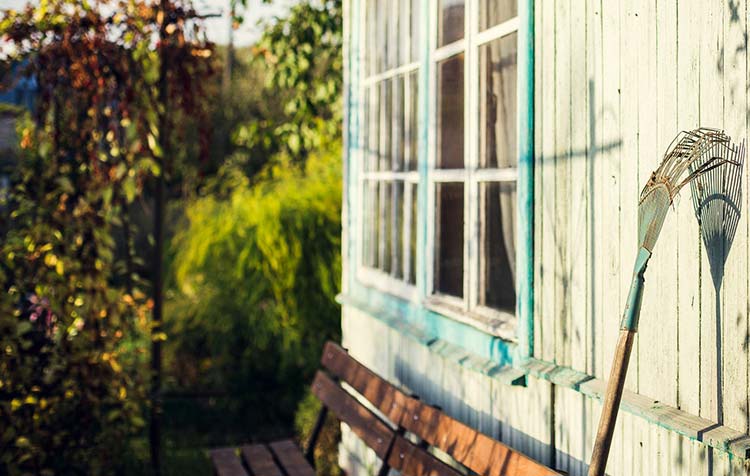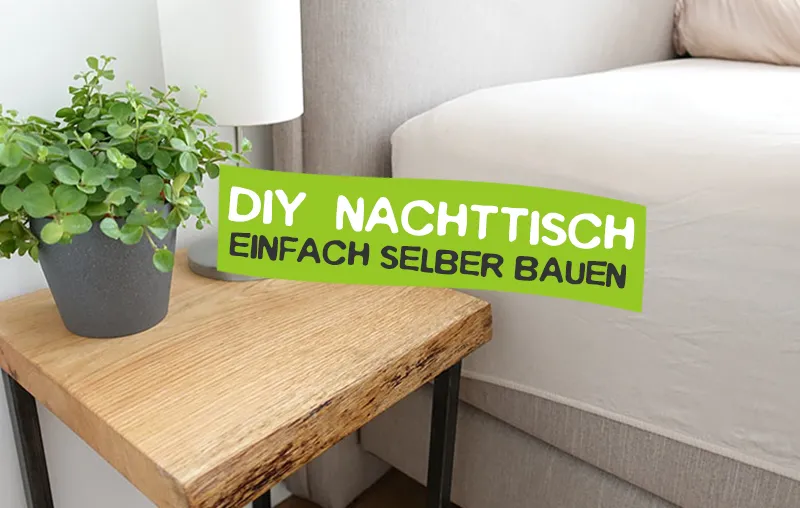You want to build yourself a sustainable garden house or make it as ecological as possible? Then you've come to the right place! In the past, I always thought of garden sheds as a kind of storage area for lawnmowers & co. But at the latest now that I have my own plot and am building a house, I realize how versatile and spacious modern garden sheds are. The aspect of sustainability is very important to me - and as a reader of this blog, you will probably see it in a similar way.
Here you can learn how to implement your garden house project in the most environmentally friendly way possible. By the way, it doesn't matter whether you want to build your garden house yourself or buy and design it prefabricated according to your ideas!
In advance you will find here a short Overview about the tips from this post:
- Set on the building material wood
- Build your garden house with a roof overhang
- Use water-based impregnations and varnishes
- Ensure energy efficient insulation
- Make the roof a green biotope
- Install a small solar panel
- Extend the life of your garden house
- Go for Upcycling & Do It Yourself with the furnishings
- Let your garden house from climbing plants
- Catch the rainwater in a barrel
10 tips for building a sustainable garden house
Durable, energy-saving, animal-friendly and resource-saving should be the garden shed - we agree, right? There are dozens more environmental considerations - but these should be the focus. Here are the promised 10 tips to consider when building your sustainable garden shed. Let's go.
1. bet on the building material wood
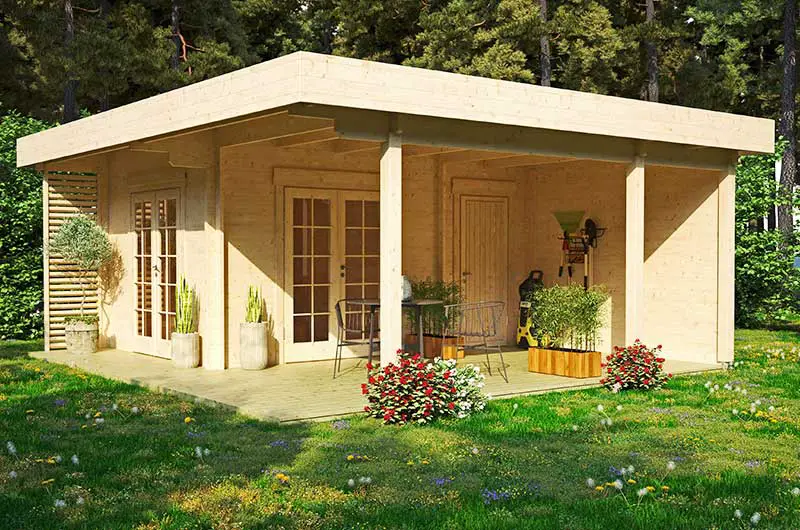
Let's start with the most obvious: the building material! Even if for him Forests cut down need to be, the renewable raw material wood provides an ideal basis for the most ecological garden house possible. It binds CO2, can basically be processed without the use of pollutants - and disposal is also straightforward. Ideally, you can even reuse the wood for DIY projects if the cabin is eventually demolished. Of course, you should avoid tropical woods. The FSC seal for wood from sustainable forestry is a valuable guide to finding the most ecologically produced wood possible. Based on these criteria, I finally decided on a sustainable garden house from Gartenhausfabrik.de decided.
2. build your garden house with a roof overhang
If your painstakingly designed and built garden shed becomes damp and rotten within a few years and you have to replace the building material, that's not very environmentally friendly. Building a sustainable garden shed also means making sure that it is exists as long as possible without constantly new natural resources to consume. A valuable measure to protect the outer facade and other components is therefore the roof overhang! You should definitely plan for this to protect your garden hut. protect from the weather in the long term.
3. use water-based impregnations and varnishes
What good is the wood from the most ecological forestry if you paint it with chemical wood preservatives and varnishes. Whether fresh from the hardware store, from online retailers or as a DIY upcycling project: as a rule, the wood stands you natural available. So you have it in your own hands to give your garden house an environmentally friendly paint job.
Therefore it is best to use a Water based impregnation. It protects the wood from mold and rot - making it as durable as possible. Brushes and rollers can also be cleaned easily and without the use of chemicals.
The painting of your garden house will become even more sustainable if you now also Water-based or natural resins and oils glazes and varnishes sets. These also protect the wood and ultimately give your garden shed exactly the color you want.
4. care for energy efficient insulation.
Modern garden sheds are more than just storage rooms for shovels, lawn mowers and garden rakes! For many, they are a kind of second living space outside the house, which is heated in winter. Accordingly, it makes sense from an ecological and also financial point of view to give the green garden shed the most effective insulation possible.
For this the Wall thickness be at least 70 millimeters. Insulating glazing and Rubber seals also ensure that as little heat as possible escapes. If you use your garden house really often, an extended Extra insulation of roof, walls and floor recommended. For example, hemp fiber and wood wool are suitable as sustainable insulation materials.
In winter, your optimized insulation then lets little heat out and in summer little heat in. So you always have pleasant temperatures in your garden shed and you can be sure that the heating and energy costs will not explode. So even so, in the end, you can save money through sustainability.
5. make the roof a green biotope
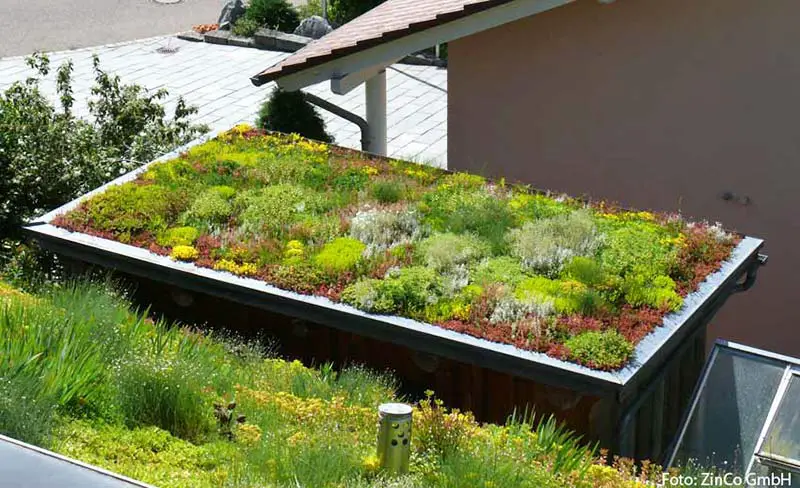
Green roofs are just great! Even though the setup may be a bit more elaborate, they are CO2 storage, air conditioning, habitat, rain storage, weather protection and insulation. in one! They are also possible on slightly sloping roofs, extremely easy to maintain and help to avoid the global species extinction counteract. A green roof can become home to countless species of insects and bring a lot of life and ultimately even more birdsong to your sustainable garden bring that you can enjoy from the hammock!
6. install a small solar or photovoltaic panel
As a rule, a garden house has a relatively low energy consumption, because most of the technical equipment is in the house. But Light, refrigerator, TV and radio are often found in garden sheds. Even with a small photovoltaic system, the electricity for these devices can be obtained from the power of the sun. But it is always to weigh what is more ecological: the additional installation of a panel on the roof of the garden house - or a power line from the residential house (whose electricity is also generated by solar power) to the garden house.
Tip: Do you already know the Solar canning jars from Sonnenglas? With this, for example, the lounge area or the path to the garden house can also be illuminated by solar energy. If you like, you get it here*.
7. extend the life of your garden house
The more often you have to replace certain materials in your garden shed, the more the sustainability of the entire project suffers. Therefore, make sure that you use the most durable material possible. With the roof (a few tips above) you have already created a good basis for longevity. But even simple Aluminum water leg and rubber seals on the doors and windows, you will protect your garden house from water running in. The energy efficiency during use will also benefit from appropriate repairs!
8. set the furnishings on upcycling & DO It Yourself
I live minimalist and am also an advocate of the Zero Waste Lifestyle. That is: I would like to do not buy superfluous things - and what I own I want to Use as long as possible and reuse them to avoid waste. Because in this way I can conserve natural resources.
In terms of the garden house, this starts with the use of natural materials. The Furniture can be found very well used at eBay classifieds or at the local flea market - or from discarded euro pallets or wooden planks build yourself.
Just let your creativity run wild! You think that you are rather not so creative? I thought the same of me! Then I started Build furniture yourself - and automatically became more and more creative! You just have to start.
Tip: For example, look at the homemade dining table from old oak planks on!
9. let your garden house from climbing plants take
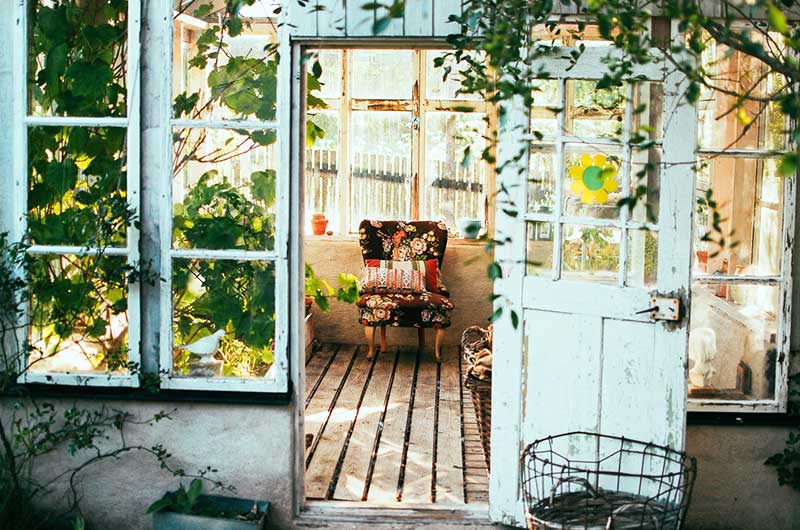
If you want more want to do something against the extinction of species, then give birds, insects and other animals both food and habitat in the narrow branches of climbing plants on your garden house. For example, how about Vines, raspberries or ivy shimmy along the climbing aids? Let your imagination run wild! In any case make the climbing plants the facade of your garden house noch spannender. Und wenn dort Früchte wachsen, erweiterst du deinen „Selbstversorger-Garten“ sogar noch um weitere Lebensmittel! 🙂
10. catch the rainwater in a barrel
A modern, sustainable garden house basically also has a rain gutter. With this, the cheap and natural rainwater can be wonderfully collected in a rain barrel. Subsequently, the always well-filled barrel serves for the Irrigation, for cleaning the outdoor facilities and, of course, as a source of water for birds and other animals in your garden.
Tip: How to make a create a bird friendly gardenYou can find out more in the linked article!
Building a sustainable garden house is not difficult!
In a natural garden also belongs an ecological garden house! And as you can see, this project is absolutely uncomplicated. With the tips from this article you should have the appropriate advice at hand to make it as easy as possible. durable, energy-saving, animal-friendly and resource-saving to build.
Do you have any questions or suggestions? Or can you think of other tips for making a garden house environmentally friendly? Then, as always, feel free to write me a comment!
Stay sustainable,

PS.: Your Garden can also become a real bee pasture and make a valuable contribution to the protection of wild bees! How this works, you will learn in the linked article. Have fun!

